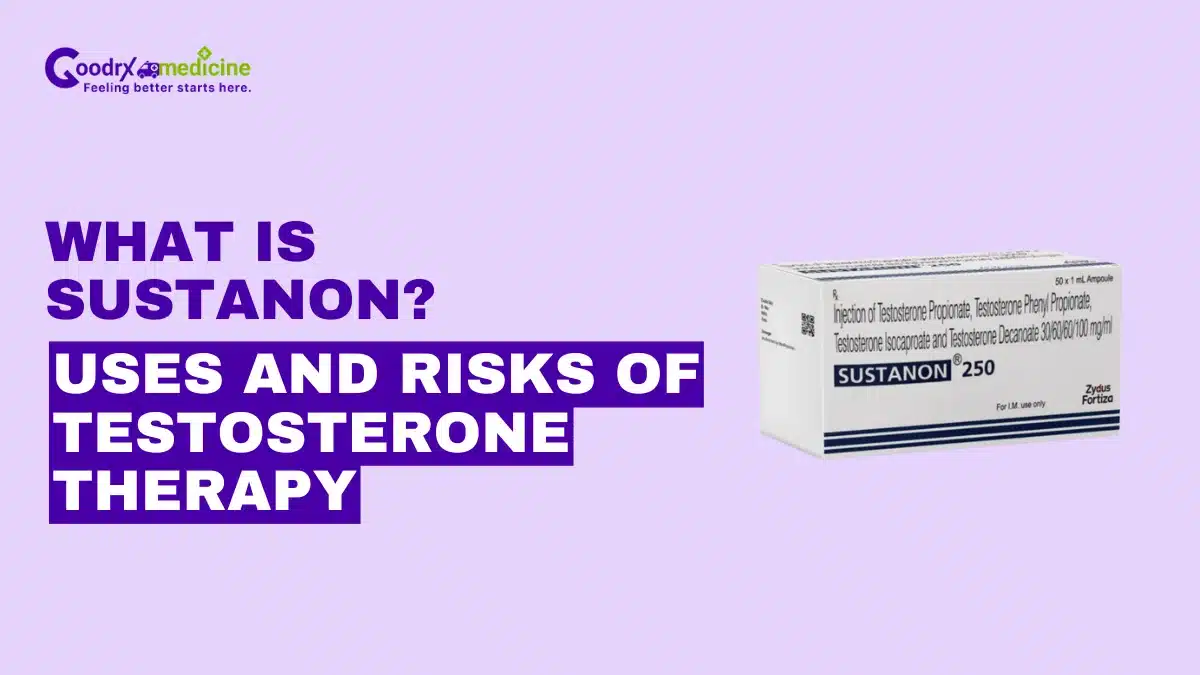If you have been struggling with persistent fatigue, reduced muscle strength, or a declining sex drive, low Testosterone levels might be the underlying cause. Sustanon stands as one of the most recognized solutions in Testosterone Replacement Therapy (TRT), offering hope to men facing these challenges.
Developed specifically to address Testosterone deficiencies, Sustanon is a unique injectable medication containing four different Testosterone esters that work collectively. This special formulation creates a sustained release pattern, helping maintain stable hormone levels over extended periods, which single-ester Testosterone treatments often struggle to achieve.
In this comprehensive article, we will answer what is Sustanon, how it works in your body, and more, so read on.
What is Sustanon made of?
Sustanon is a unique Testosterone blend containing four different Testosterone esters, each designed to release at different rates for optimal hormonal balance, including:
- Testosterone Propionate (30 mg): Fast-acting, active within 24–48 hours
- Testosterone Phenylpropionate (60 mg): Medium-acting, activates in 3–4 days
- Testosterone Isocaproate (60 mg): Long-acting, maintains levels for around 2 weeks
- Testosterone Decanoate (100 mg): Slowest-releasing, lasting up to 3–4 weeks
This lab-synthesized formula ensures safety, consistency, and long-lasting benefits when produced by licensed pharmaceutical companies.
Save up to 90% on your medicine bills
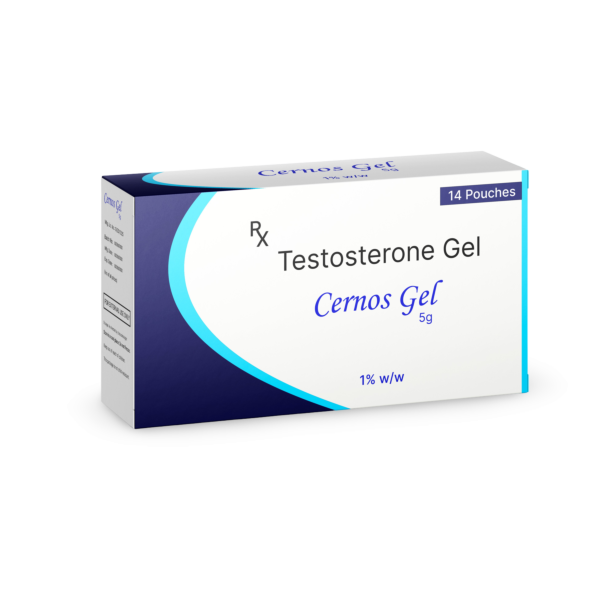
Cernos Gel 1% w/w
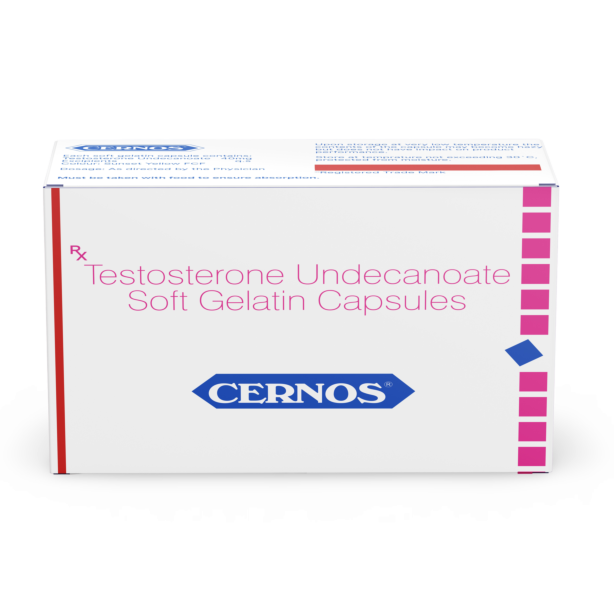
Cernos 40 mg Soft Gelatin Capsule
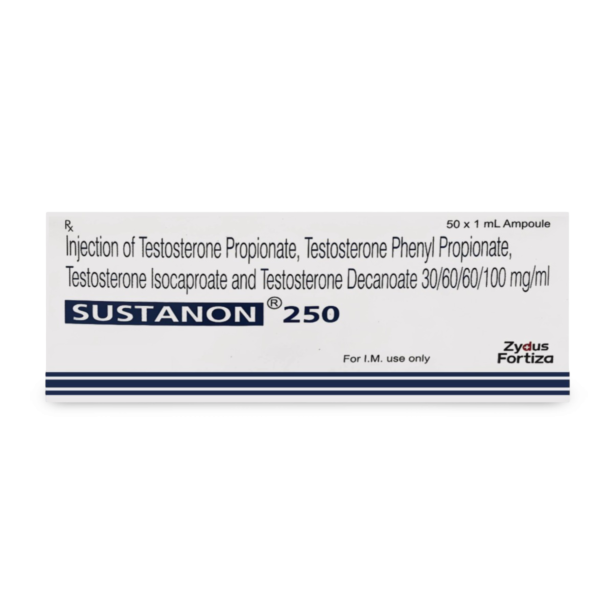
Sustanon 250 Injection
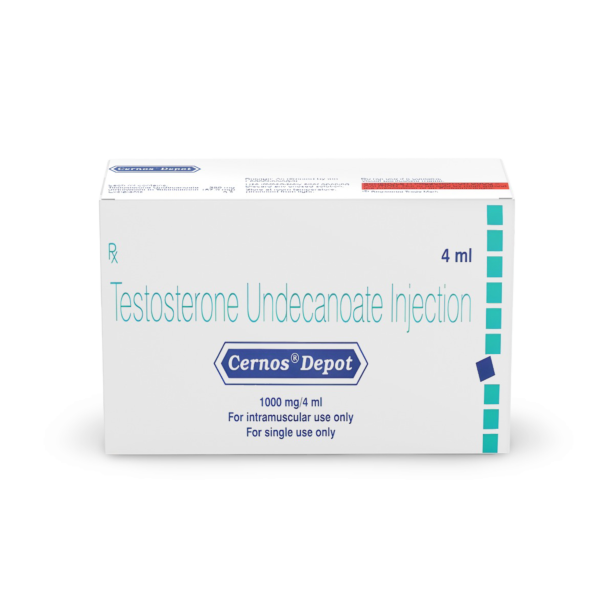
Cernos Depot 1000 mg Injection
What is Sustanon used for?
Sustanon was developed primarily as a medical treatment for low Testosterone. It’s prescribed for:
- Primary Hypogonadism: When the testicles cannot produce sufficient Testosterone.
- Secondary Hypogonadism: When the pituitary gland or hypothalamus fails to signal proper Testosterone production.
- Age-related Testosterone decline: For selected older men with significantly low Testosterone and clear symptoms.
Sustanon is classified as a prescription-only medication in the United States, requiring proper medical authorization for legal use.
Off-label applications
Beyond its approved medical uses, Sustanon has gained popularity in the bodybuilding and athletic communities. However, these are considered off-label uses not endorsed by regulatory agencies:
- Bodybuilding: Used to increase muscle mass, strength, and recovery capacity
- Performance enhancement: Some athletes use it to improve endurance and power output
Sustanon side effects
While Sustanon can be life-changing when properly prescribed, it carries potential side effects that must be carefully considered.
Common side effects include:
- Injection site reactions (pain or redness)
- Acne
- Hormonal fluctuations (mood swings or irritability)
- Skin changes (increased oiliness or acne)
- Fluid retention and mild swelling
- Testicular atrophy due to reduced natural production
Serious complications include:
- Cardiovascular complications
- Polycythemia (Excessive red blood cell production)
- Sleep apnea (Exacerbation of existing sleep-disordered breathing)
- Prostate issues
- Fertility suppression
To minimize side effects, use the minimum effective dose, regular monitoring through blood tests (initially every 3-6 months), maintain healthy lifestyle habits, and follow proper injection techniques.
Proper Sustanon administration
Proper administration is crucial for those prescribed Sustanon by a qualified healthcare provider. Keep in mind the following:
- Standard dosage: The typical dosage is 250 mg every 2 weeks for medical purposes.
- Injection technique: Deep intramuscular injection using sterile technique by a professional.
- Regular monitoring: Blood work at 3-6 month intervals initially, then annually.
A comprehensive baseline assessment before starting Testosterone therapy should include Complete Blood Count (CBC), lipid panel, liver function tests, PSA (Prostate-Specific Antigen), and Testosterone levels.
Precautions and warnings
Before using Sustanon, be aware of these necessary precautions:
- Medical screening required: Complete cardiovascular, prostate, and blood testing before starting.
- Contraindications: Not appropriate for men with prostate or breast cancer, untreated sleep apnea, severe heart failure, or uncontrolled Polycythemia.
- Drug interactions: May interact with blood thinners, corticosteroids, insulin, and other medications.
- Monitoring requirements: Regular blood tests for Testosterone levels, complete blood count, liver function, cholesterol, and PSA.
- Special populations: Use extreme caution in older men or those with heart disease.
- Mental health awareness: This may affect mood and psychological well-being and requires monitoring.
- Not for women: Sustanon is not recommended for women and must not be used by pregnant women, those who may be pregnant, or breastfeeding mothers.
Conclusion
Understanding what is Sustanon is essential for anyone considering Testosterone Replacement Therapy. As a powerful blend of four Testosterone esters, Sustanon offers a sustained and balanced hormonal effect that can significantly improve symptoms of low Testosterone when used appropriately.
However, its benefits come with potential risks that require careful medical evaluation. Misuse or self-medication can lead to serious health complications, making professional guidance non-negotiable.
Always consult a licensed healthcare professional before starting therapy to ensure it’s suitable for your condition, and undergo regular monitoring throughout treatment. With the proper oversight, Sustanon can be a safe and effective option to restore hormonal health and improve overall quality of life.
Frequently Asked Questions
Is Sustanon the same as Testosterone?
Yes, Sustanon is similar, but not the same. It is a specific formulation containing four Testosterone esters. While all Testosterone medications contain the same base hormone, Sustanon’s unique blend creates a distinctive release pattern.
What is the half-life of Sustanon 250?
Sustanon 250 has a half-life of approximately 15 to 18 days due to its blend of four Testosterone esters. The longest-acting ester, Testosterone decanoate, contributes most to its extended half-life. Effects may persist for up to three weeks post-injection.
Is 1 ml of Testosterone a week enough to build muscle?
Yes, 1ml of Sustanon weekly for natural muscle building exceeds necessary therapeutic doses. Research shows modest gains occur at 100-200mg weekly, while 250mg produces significant results with proper training and nutrition. Higher doses increase side effects without proportional benefits.
Is Sustanon a controlled drug?
Yes, Sustanon is classified as a Schedule III controlled substance in the United States and is similarly regulated worldwide. This classification recognizes its legitimate medical uses while acknowledging potential for abuse. Legal possession requires a valid prescription in most jurisdictions.
Can Sustanon be detected in drug tests?
Yes, standard sports and employment drug panels can detect Sustanon metabolites for 3-6 months after use. Advanced carbon isotope ratio testing can identify synthetic Testosterone for even more extended periods. Athletes subject to WADA testing should know that Testosterone use requires a therapeutic use exemption.
What are the signs that Sustanon is working effectively?
Early indicators of effective Sustanon therapy include improved energy levels, enhanced mood, and increased libido within 2-3 weeks. Physical changes like improved body composition and strength typically follow within 1-2 months. Optimally adjusted therapy should normalize Testosterone levels while minimizing side effects.
When referencing outside resources, GoodrxMedicine always provides full citations. To learn more about the measures we use to maintain the quality of our content, please review our Content Information Policy.



